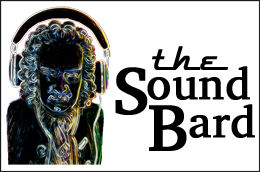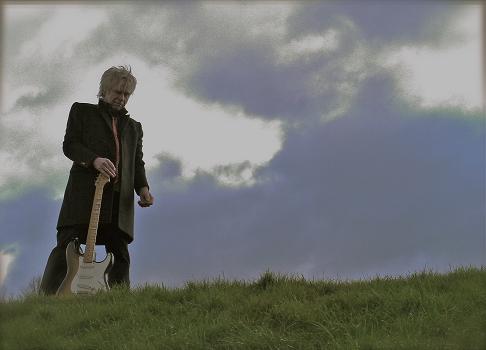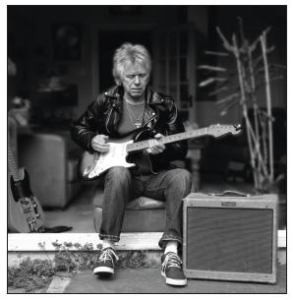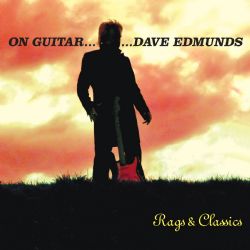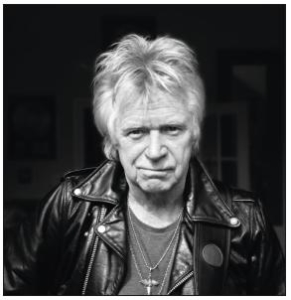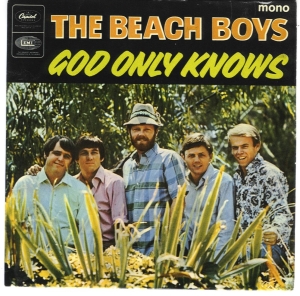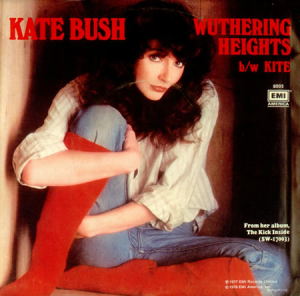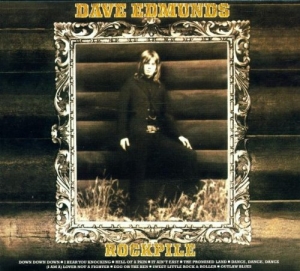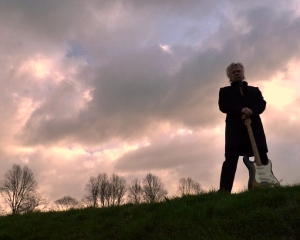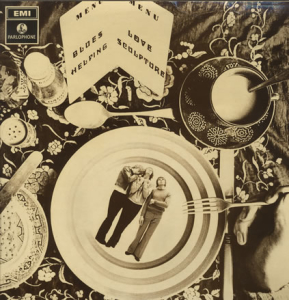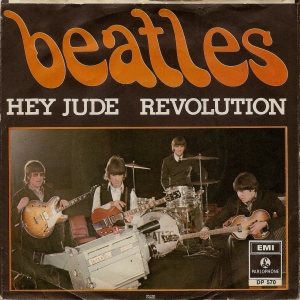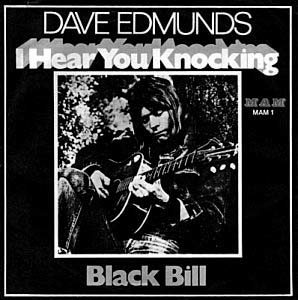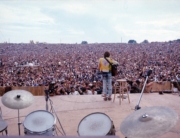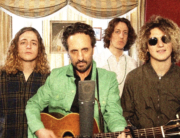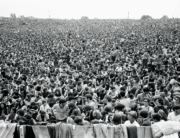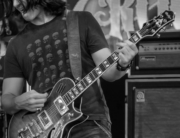BY MIKE METTLER — JULY 15, 2015
Leave it to Dave Edmunds to always want to take things a little bit left of center. “I’ve never liked listening to albums, and I’ve never liked making them,” admits the Welsh-born guitarist and producer known for his modern rockabilly sensibilities (see Rockpile’s Seconds of Pleasure and solo hits like “Slipping Away” and “Girls Talk”). “I’m a singles guy; always have been.”
That said, Edmunds agrees he found the right album-length formula for the 15 songs he compiled for 2013’s …Again (RPM), but he decided to shift gears for the just-released all-instrumental On Guitar… Dave Edmunds: Rags & Classics (RPM). “The album tracks are pretty similar to the originals, but you’re shocked when a guitar comes in instead of a vocal,” he explains. It’s a valid point, especially when you hear how Edmunds’ 1959 Fender Stratocaster takes place of the iconic vocal and organ lines on Procul Harum’s “A Whiter Shade of Pale,” how his Taylor acoustic fuels “Classical Gas,” or how he adds an unexpected twang to Mozart’s “Symphony No. 40 in G minor, Molto Allegro.”
I called Edmunds, 71, across the Pond to Wales to discuss the one-man-band approach to Rags & Classics, delve further into his stark view on loving singles vs. LPs, and find out what he thinks the two best-sounding songs of the rock era are. Subtle as a flying mallet, indeed.
Mike Mettler: I find the sounds on Rags & Classics to be quite interesting, especially given the way you used Logic Pro 9 to record it. And it’s all total DIY from your end, right?
Dave Edmunds: Yeah. I put aside a room in my house to use as a studio. It has very little equipment — I’ve got a Logic Pro 9, a keyboard, my guitars, a bass, and that’s it. And a Roland R8 drum machine, which comes in handy.
Mettler: As a longtime producer, your ears are attuned for a certain sound when you’re recording. What kind of sound or sounds were you going for here?
Edmunds: Well, hmm, let’s see. I just try to get a nice drum sound, a nice bass sound, and a nice guitar sound. I don’t do a helluva lot of messing around with things, just a bit of EQ. I use the Logic Pro 9 not as most people would use a machine like this because I don’t do any sequences or loops. There’s no MIDI on there, and no quantizing. It was pretty straightforward. I use it more like an analog tape recording. I use my experience from that and use the Logic Pro 9 as a recording device, but with all of those nice effects and everything else you can get with it that you can’t get with analog. I’ll never again use analog tape.
Mettler: Oh no? How come?
Edmunds: Ummm, I’m not convinced when people say, “Oh, it sounds warmer,” or somehow it’s superior. I think it’s all down to the playback system. On a great playback system, it’s gonna sound good. And if it’s not such a great playback system, then it’s not going to sound good, regardless of the format you play it on. In an A/B comparison, I think people can fool themselves.
In the ’70s, people would be proud about having their Pioneer amp and their Tannoy speakers, and they’d shift them around to get them in the right place in their rooms, and be proud of playing this stuff on a nice turntable. It’s gone now — people play it through their television systems! There’s bass and treble, and not much middle in there. The better the recording, the worse the playback choice gets.
Mettler: I’m at least encouraged by seeing, here in the States, that the younger generation has gotten into vinyl to at least see what it’s all about.
Edmunds: Yeah, I never woulda thought that would happen.
Mettler: Why do you think that is? Is it a curiosity factor, or do you think they’re getting something from vinyl that they’ve been missing?
Edmunds: I don’t know! I’d have to talk to someone who’s gone back to vinyl to see why they prefer it, and try to get to the bottom of it. It’s just so convenient with iTunes — you can just grab a track out and play it.
See, I’ve never liked listening to albums, and I’ve never liked making them. I’m a singles guy. I came into the business when it was a singles-driven market, with those magical rock & roll records from the ’50s and ’60s — ahhh. It’s still with me. When I put albums out, it’s usually just a collection of tracks — until the last one I did, …Again, which came out 2 years ago (2013). That one, I’m proud of. All the others, I don’t think I was putting enough work into, or had enough interest in albums. I don’t like them. I prefer individual tracks and making up my own playlists.
Mettler: How do you listen to music these days?
Edmunds: I usually listen in the car, if I need to listen to something. What I really find annoying, and a bit sad, is that as recording devices get better, the playback systems are worse. People and their kids are listening to Meghan Trainor and Beyoncé on their iPhones, speaking out of this thing, and they think that’s great, or out of a laptop without using headphones or with poor-quality earbuds that keep moving or falling out.
Mettler: That’s why it’s up to us to keep championing the higher-res formats and options. Tell me more about the song and style choices you made for Rags & Classics.
Edmunds: I wanted to present a spectrum of guitars from electric to acoustic, and really show off the styles I’m interested in. (chuckles) We gradually brought it down with Elton John’s “Your Song,” and then added some of the old Merle Travis and Chet Atkins stuff. That’s my recollection, but I’ve always done that. One record sounds different than the previous one, you know.
Mettler: The Many Different Shades of Dave, we could call it.
Edmunds: I know some compilation albums of mine sound like “various artists.” (chuckles) I think I’d get bored with any one type of music all the time. Other people do it, and they’re great. You’re going to see ZZ Top, you know what you’re going to get. You get a ZZ Top album, and you sort of know what you’re going to get — and it’s brilliant. They’re pretty unified in their style, but I can’t do that.
With this album, I just wanted to pick my favorite classic pop songs. What’s a well-crafted pop record that I thought it was great? The album tracks are pretty similar to the originals, and you’re shocked when a guitar comes in instead of a vocal.
Mettler: Right, it’s pretty startling when you get guitar on “A Whiter Shade of Pale” where you expect to hear a vocal, or keyboards. Though you did have the phrase “I can fly” sung toward the end of “I Believe I Can Fly.” That’s the only vocal you decided to do on the album. How come?
Edmunds: Oh, I don’t know. I just get carried away when I make a record. It’s difficult finding an ending to it.
Mettler: I really love the textures on “God Only Knows.” Talk about brilliant producers — hello, Mr. Brian Wilson…
Edmunds: It’s one of my favorite records, and I dismantled it musically in my head over the years many times. I figured out the cascade vocal on the end of The Beach Boys’ version only has three vocal parts — Brian does two [the top and the bottom], and Bruce Johnston does the other one [the middle]. Carl’s voice got tired, apparently, so he left. They finished that off with just the three-part harmony. [“God Only Knows” was recorded over a number sessions in March and April 1966, and was released as a single on July 11, 1966.]
So I’ve dismantled it and taken it apart by listening to it over and over again. It’s a miracle of pop record-making.
Mettler: And the fact that it all comes out of Brian’s head, and he only has one good ear and can only hear in mono…
Edmunds: Same as me. I’ve got that problem. I’ve got tinnitus in one ear, over 30 years, and the top frequencies have downed severely. So I’ve got one good ear.
Mettler: Way back in the early days in the studio, you worked with mono equipment, isn’t that right?
Edmunds: Yes, yes. And when stereo started, people were overusing it, doing hard left and hard right. The other day, I was listening to The Beatles’ “I Am the Walrus” (1967), which is my favorite Beatles record. Listening to it in stereo on headphones — it’s a mess! Disastrous! The mono mix is fine.
But the swinging of guitar solos from left to right — people get excited about it: “Wow, it’s moving!” If you listen to a lot of the early Motown records, the stereo versions usually suffer for it. You listen to “Dancing in the Street” by Martha and The Vandellas (1964) — it’s better in mono than stereo.
Mettler: I also like your take on Kate Bush’s “Wuthering Heights.” It’s fantastic.
Edmunds: The chorus, I could hear it coming out on guitar. It just lends itself to it. And then I worked on the rest of it and thought, “Yeah, I can make this work.” I just had to find the bells to put on the intro. (chuckles) And I like the end where it fades out — I got creative over the time signatures and how it fades out. It was fun going from 3/4 to 4/4. That was a lot of fun, working out the outro to that.
Mettler: Have you and Kate ever crossed paths over the years at all?
Edmunds: No. I’ll send her a copy. (chuckles)
Mettler: If we’re going to look at your own catalog, I think the first album that has your name on it as a solo artist, Rockpile (1972), with songs like “Down Down Down,” is a pretty good collective work.
Edmunds: Mmm, some of the tracks are, here and there. That was an interesting one. I made that record all on my own, simply because there was no one else around. I was living in Wales, and had access to a not-very-well-equipped studio. I just thought, “Well, I can play a bit of drums, I can play a bit of bass, and I learned a bit of keyboards somewhere along the way.” So I got into it like it was an apprenticeship — just learning how to make records.
Mettler: I like the one-man-band approach on there. Your version of Chuck Berry’s “Sweet Little Rock & Roller,” and “Egg or the Hen,” the Willie Dixon track —
Edmunds: That’s a faithful copy of the Chuck Berry one, yeah.
Mettler: You say you were a singles guy — what were some of the very first records you got as a kid?
Edmunds: Uhh, I think I had a Merle Travis EP, of just guitar instrumentals [The Merle Travis Guitar, from 1956]. I had the Jerry Lee Lewis Sun album [Jerry Lee Lewis, 1958], the Carl Perkins Sun album [Dance Album of… Carl Perkins, 1956]. Well, that’s a good album; I like that one. That one works, every track, for me. I love that.
Mettler: Did you ever think in those days that you’d get a chance to work with and record with Carl Perkins someday?
Edmunds: Noooo! He was somewhere on another planet! Yeah, you’d never. You’d think they were sort of ghostly figures who came from another dimension, with weird-looking guitars. That fascinated me — the Fender Stratocaster. “What the hell’s that???” There were no electric guitars like that in Britain. (chuckles)
Mettler: I guess the closest thing would have been when Hank Marvin came to the forefront of things, with The Shadows.
Edmunds: That’s right, yeah. He had the pink ones, which turned me off a bit. I only recently got the Buddy Holly version, the 1959 tobacco sunburst, and that’s a beautiful guitar. When I’m in the room sometimes, I just look at it and go, “Wow! Look at that! How could they get it so right, so perfect the first time?”
Mettler: I think of that Strat tone on this record, the kind of tone Mark Knopfler and Richard Thompson get that’s just amazing. Especially the tone you get on “A Whiter Shade of Pale” and “I Believe I Can Fly” — to me, that’s a signature sound for you.
Edmunds: Right. Yeah, yeah, I love it! Fenders are more fun! (laughs) That’s a slogan they can use, that one: “Fenders Are More Fun.”
Mettler: I think we have a new endorsement for you there. So guitar was always the thing for you? Once you heard those Sun records, that did it for you?
Edmunds: Yeah, and then James Burton, and Scotty Moore. They were the originators of what got me hooked. Also Sonny Curtis, and what he was doing with The Crickets. He was doing some nice fingerpicking stuff. Lovely stuff, very classy. There was some great musicianship around in those days. There was some great guitar with Cliff Gallup, and James Burton. And then all the horn players with Little Richard, and the drummers — they were all jazzer guys. They were kind of overqualified with what they were doing in rock & roll — and that’s why it sounded so good, and really so slick, and had such a groove to it.
Mettler: One of the reasons some of the ’60s rock bands clicked was because they had jazz backgrounds — some of the guys in Cream, like Jack Bruce, and the guys in The Doors had it too. I think that helped them set the template.
Edmunds: It was all about the musicianship. My son, when he was working for Sony, he said, “All the records now, you can’t have any guitar solos, you’ve gotta have a four-bar intro, and you’ve gotta have Auto-Tune on the vocal.” And you don’t hear great drum fills anymore — great drumming, like the Hal Blaine stuff. You don’t hear wonderful guitar solos on pop records. I know we’ve got Mark Knopfler and Johnny Hiland. Have you heard of that guy? I’ve just discovered him, and he’s phenomenal.
Mettler: Yeah, he’s great; I remember his Nashville days. And Mark’s new album, Tracker, is another benchmark for him.
Edmunds: He’s something. He gave Eric [Clapton] plenty to think about when they played together at Albert Hall. You can see that on YouTube [where EC and MK cut heads on “Money for Nothing,” which also features Sting and Phil Collins, at the Royal Albert Hall on October 15, 1997].
Mettler: You and Eric have crossed paths a number of times, right?
Edmunds: Ah yeah, yeah. The Carl Perkins show, the Cinemax special — we had Eric on that. I’ve known him for years, on and off, and I see him now and again. I’ve seen him all along the way. [Edmunds was the musical director for Blue Suede Shoes: A Rockabilly Session, recorded at Limehouse Studios in London on October 21, 1985. It first aired on Channel 4 in the U.K. in 1985 and then on Cinemax in 1986. The band included Edmunds, Eric Clapton, George Harrison, Ringo Starr, and members of the Stray Cats, among others.]
Mettler: Speaking of doing covers, I have Love Sculpture’s Blues Helping record (1968) in hand here, where you do things like “Stumble” and “3 O’Clock Blues” —
Edmunds: I was a bit out of my weight there. I didn’t have any interest in blues. I didn’t know what it was. I didn’t have access to that stuff in the early days like Eric and Jeff Beck and Keith Richards did, who’d heard all this Muddy Waters stuff. The first thing I’d heard was Bill Haley & His Comets; that’s what got me into it all.
What happened was EMI came onto it, as we had the “Sabre Dance” thing out [a Top 5 U.K. hit single in 1968], and they asked, “We want a band! We want someone to do a blues record.” And I go, “I’ll do an album of Scottish hills songs if you want!” — anything to get an album out! (chuckles) They sent me some B.B. King, and I listened to Eric and John Mayall, the BluesBreakers album (1966). Next thing I know, I’m in Abbey Road, and The Beatles are mixing “Hey Jude” in the next studio. And we’re recording Blues Helping.
Mettler: Did you sneak over and see what The Beatles were up to?
Edmunds: Yeah, I could hear them mixing it. Paul [McCartney] walked into the studio early in the day, and he thought he was [supposed to be] in the studio we were in. He had his Sgt. Pepper jacket on. “Oh sorry guys; we must be in the next studio. Have a good session!” And then later in the day, I could hear them mixing “Hey Jude.” [The final mixing for “Hey Jude” was done at Abbey Road on August 2 (stereo) and August 8 (mono), 1968, and the single was released August 26, 1968.]
I was just trying to play like Eric on that record [Blues Helping]. I’ve heard some of it since. Well, it’s a brave effort… (brief pause) well, I’m not sure about that.
Mettler: Oh, I think it turned out OK. When you arrived in London, was that to start up Love Sculpture at that point, or…?
Edmunds: No, I was just on my own. I left my job. I was a motor mechanic before that, and I just moved up to London. Nothing happened. I went back and discovered what is now Rockfield Studios [near Monmouth in Wales] — which was just a room with a couple of machines in it at that time. That’s what got me started. If it hadn’t been for that, I don’t think I’d be in the music business.
Mettler: That’s where you recorded “I Hear You Knocking,” back in the day.
Edmunds: Yeahhhh… in 19-and-70, yeah.
Mettler: I don’t know if people even know there are other versions of that song at all. It’s totally “Dave-ified.” [Edmunds’ version of “I Hear You Knocking” hit #1 in the U.K. in December 1970. Smiley Lewis cut it first in 1955.]
Edmunds: (chuckles) Yeah, I think people think of it as a 4/4 song now, and it started as a 6/8 song. It’s got a slow groove.
Mettler: Will you perform any of the Rags & Classics material live?
Edmunds: I don’t know yet, until I get into rehearsal. It’s keyboards, drums, a bass player, and me, so we’ll see. I’d like to get “A Whiter Shade of Pale” to work. That might be do-able.
Mettler: Do you have a favorite-sounding song or single, the one that’s your personal benchmark?
Edmunds: For me, there’s a track on the last album […Again] called “Chutes and Ladders” — a really, really clever song written by my friend and original bass player, John David [who played on “Sabre Dance”]. Lyrically, it’s brilliant, and I like the production I did with it.
Mettler: And how about in terms of production quality, from other artists?
Edmunds: For other people — oh, you got me there. Where do I go with this? I could play safe and say “God Only Knows.” What else would do it for me, production-wise? Well, “River Deep – Mountain High” [by Ike & Tina Turner, produced by Phil Spector, and released as an ill-fated single in May 1966]. Those are the two best pop records: “River Deep – Mountain High” and “God Only Knows.” So there it is. (laughs)
Tags: A Whiter Shade of Pale, Abbey Road, Again, Blues Helping, Brian Wilson, Carl Perkins, Chutes and Ladders, Dancing in the Street, Dave Edmunds, Eric Clapton, Fender Stratocaster, Girls Talk, God Only Knows, Hey Jude, I Am the Walrus, I Believe I Can Fly, I Hear You Knocking, James Burton, Jerry Lee Lewis, Johnny Hiland, Kate Bush, Logic Pro 9, Love Sculpture, Mark Knopfler, Merle Travis, Mozart, Phil Spector, Procul Harum, Rags & Classics, River Deep Mountain High, Rockfield Studios, Rockpile, Sabre Dance, Scotty Moore, Slipping Away, Taylor acoustic, The Beach Boys, The Beatles, Wuthering Heights